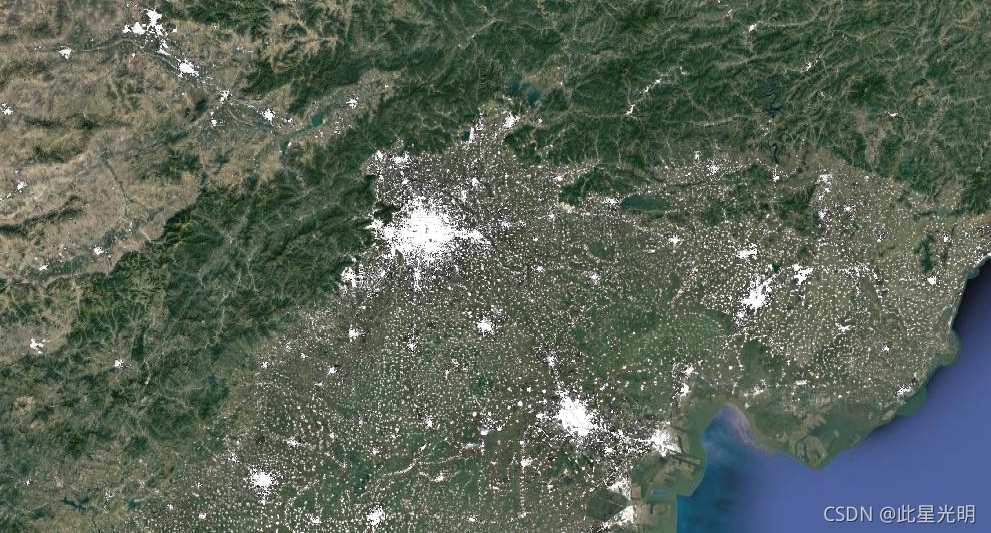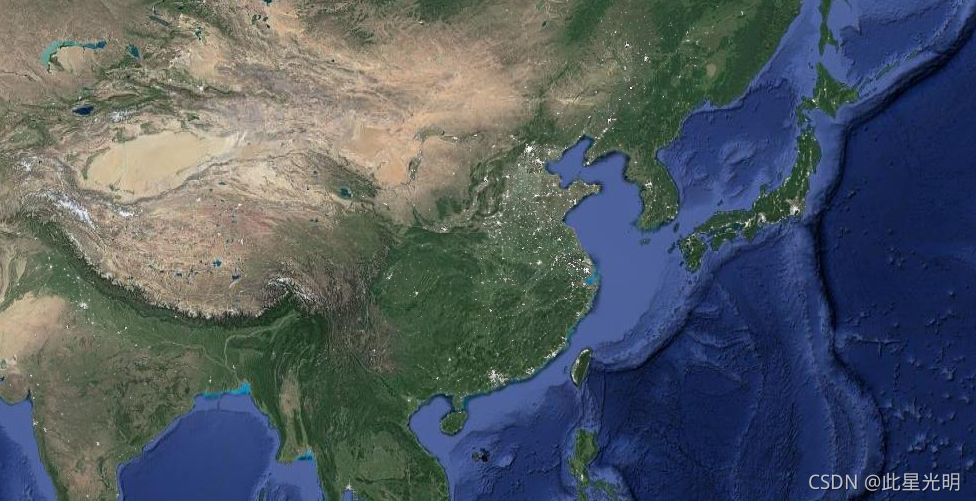Google Earth Engine——清华Tsinghua/FROM-GLC/GAIA/v10该数据集包含1985年至2018年全球不透水表面积的年度变化信息,分辨率为30米
Google Earth Engine——清华Tsinghua/FROM-GLC/GAIA/v10该数据集包含1985年至2018年全球不透水表面积的年度变化信息,分辨率为30米

This dataset contains annual change information of global impervious surface area from 1985 to 2018 at a 30m resolution. Change from pervious to impervious was determined using a combined approach of supervised classification and temporal consistency checking. Impervious pixels are defined as above 50% impervious. The year of the transition (from pervious to impervious) can be identified from the pixel value, ranging from 34 (year: 1985) to 1 (year: 2018). For example, the impervious surface in 1990 can be revealed as the pixel value greater than 29 (see the lookup table). This dataset is temporally consistent, following the conversion from pervious (e.g., non-urban) to impervious (e.g., urban) monotonically. For more information about the mapping approach and assessment, see Annual maps of global artificial impervious area (GAIA) between 1985 and 2018 (Gong et al. 2020).该数据集包含1985年至2018年全球不透水表面积的年度变化信息,分辨率为30米。从透水到不透水的变化是使用监督分类和时间一致性检查的综合方法确定的。不透水的像素被定义为超过50%的不透水。转变的年份(从透水到不透水)可以从像素值中确定,范围从34(年份:1985)到1(年份:2018)。例如,1990年的不透水表面可以显示为像素值大于29(见查询表)。这个数据集在时间上是一致的,按照从透水(如非城市)到不透水(如城市)的转换单调地进行。关于制图方法和评估的更多信息,见1985-2018年间全球人工不透水面积(GAIA)的年度地图(Gong等人,2020)。
Dataset Availability
1985-01-01T00:00:00 - 2018-12-31T00:00:00
Dataset Provider
Collection Snippet
ee.Image("Tsinghua/FROM-GLC/GAIA/v10")
Resolution
30 meters
Bands Table
Name | Description | Min* | Max* |
|---|---|---|---|
change_year_index | Year of the transition from from pervious to impervious. From 34 (year: 1985) to 1 (year: 2018) | 1 | 34 |
* = Values are estimated
Class Table: change_year_index
Value | Color | Color Value | Description |
|---|---|---|---|
1 | #014352 | 2018 | |
2 | #1A492C | 2017 | |
3 | #071EC4 | 2016 | |
4 | #B5CA36 | 2015 | |
5 | #729EAC | 2014 | |
6 | #8EA5DE | 2013 | |
7 | #818991 | 2012 | |
8 | #62A3C3 | 2011 | |
9 | #CCF4FE | 2010 | |
10 | #74F0B9 | 2009 | |
11 | #32BC55 | 2008 | |
12 | #C72144 | 2007 | |
13 | #56613B | 2006 | |
14 | #C14683 | 2005 | |
15 | #C31C25 | 2004 | |
16 | #5F6253 | 2003 | |
17 | #11BF85 | 2002 | |
18 | #A61B26 | 2001 | |
19 | #99FBC5 | 2000 | |
20 | #188AAA | 1999 | |
21 | #C2D7F1 | 1998 | |
22 | #B7D9D8 | 1997 | |
23 | #856F96 | 1996 | |
24 | #109C6B | 1995 | |
25 | #2DE3F4 | 1994 | |
26 | #9A777D | 1993 | |
27 | #151796 | 1992 | |
28 | #C033D8 | 1991 | |
29 | #510037 | 1990 | |
30 | #640C21 | 1989 | |
31 | #31A191 | 1988 | |
32 | #223AB0 | 1987 | |
33 | #B692AC | 1986 | |
34 | #2DE3F4 | 1985 |
使用说明:
This work is licensed under a Creative Commons Attribution 4.0 International License. https://creativecommons.org/licenses/by/4.0/
数据引用:
Gong, P., Li, X., Wang, J., Bai, Y., Chen, B., Hu, T., ... & Zhou, Y. (2020). Annual maps of global artificial impervious area (GAIA) between 1985 and 2018. Remote Sensing of Environment, 236, 111510.
代码:
var image = ee.Image('Tsinghua/FROM-GLC/GAIA/v10');
Map.addLayer(image, {min: 0, max: 34});
Map.setCenter(116.9921, 39.7971, 8);


